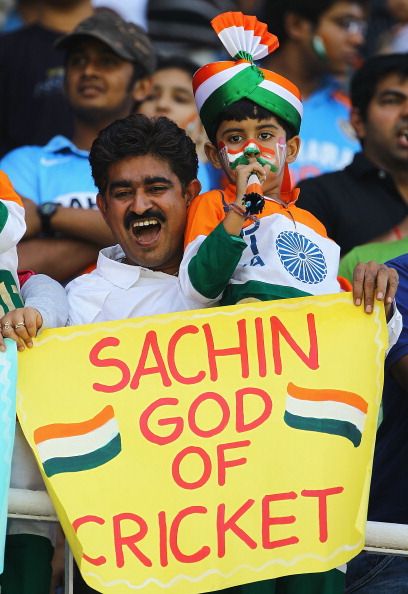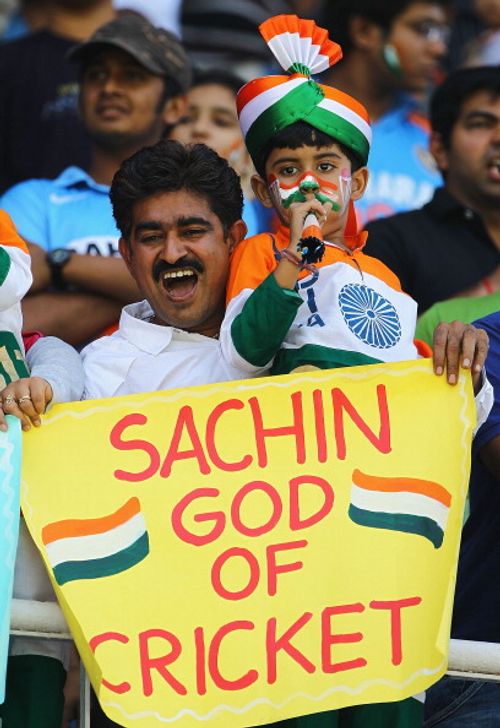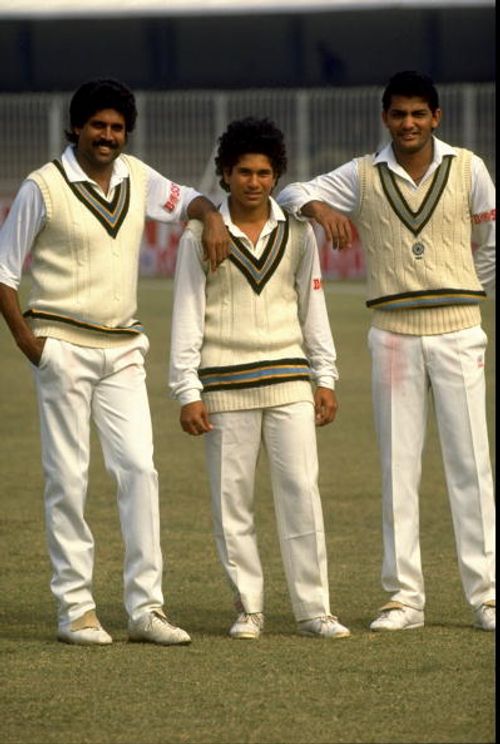
A cynic's reasons for a nation falling in love with Sachin Tendulkar
In a few hours, Sachin Tendulkar will walk the last few yards of his cricketing career at Mumbai, putting the finishing touches to, unarguably, the most followed career in world cricket.
The last few years have witnessed the retirement of a golden generation of cricket’s gentlemen. The likes of Warne, Dravid, Lara, Ponting and McGrath have all hung up their shoes, and it is Tendulkar’s turn to follow suit. However, the feeling of loss that will accompany India’s second master blaster’s retirement will be much greater than that felt before. But this will not be because Sachin was a far greater cricketer than those mentioned.
Quite simply, Sachin Tendulkar’s contribution to the game was much larger than his glorious straight drive or the audacious uppercut. If anything, his single greatest gift to the spectators was that his presence on the pitch gave an emotional, rather than a logical, reason for falling in love with the game. And as always, emotion trumps logic.

AHMEDABAD, INDIA – MARCH 24: A young cricket fan shows his support to Sachin Tendulkar of India during the 2011 ICC World Cup Quarter Final match between Australia and India.
A lot has been said and written about Tendulkar’s cricketing ability. For close to a decade, millions have debated over whether he is the finest batsman of all time. Test averages be damned, people have argued. Longevity backed by sustained excellence in performance is what matters.
But none of the above can quite explain the godlike status enjoyed by Tendulkar.
Sachin’s debut as a 16-year old in Pakistan was what , undoubtedly, placed him on the pedestal in the populace’s heart.
The India of the late 1980s and early 1990s was a turbulent one. The rapid opening of the economy due to balance of payments crisis coupled with the decline in the Indian hockey team presented a fertile and ripe time for planting the Tendulkar sapling. While the former brought the medium of television to the general public, the latter provided a space for another sport.
Though India had gained success in the early and mid-1980s in One Day Internationals, the national cricket team lacked a player of consistent flair and substance. Sunil Gavaskar had retired, but his abilities were more suited to the longest version of the game. Limited overs cricket was bringing a dash of the crazy-a touch of bravado-to the staid dealings associated with the game played in whites, and Indians craved for their own Viv Richards.
And so, a teenager walked onto the National Stadium green of Karachi across the border to face a battery of fast bowlers the world has not seen the likes of since. Imran Khan, Wasim Akram, and Waqar Younis formed the Pakistani pace triumvirate, and they made Tendulkar bleed for his runs. However, the chin music would not keep Tendulkar down.

Oct 1989: (L-R) Kapil Dev, Sachin Tendulkar and Mohammed Azharuddin pose for the camera before the Test series against Pakistan in India.
The image of a 16-year old declining medical assistance while blood streamed from his nose captured the nation’s imagination. That was Tendulkar displaying substance. The display of flair came in an exhibition game played at Sialkot, where legendary leg-spinner Abdul Qadir was hammered for four sixes in an over, with Tendulkar making 53 runs off just 18 balls.
But how exactly did the youngster make people swoon?